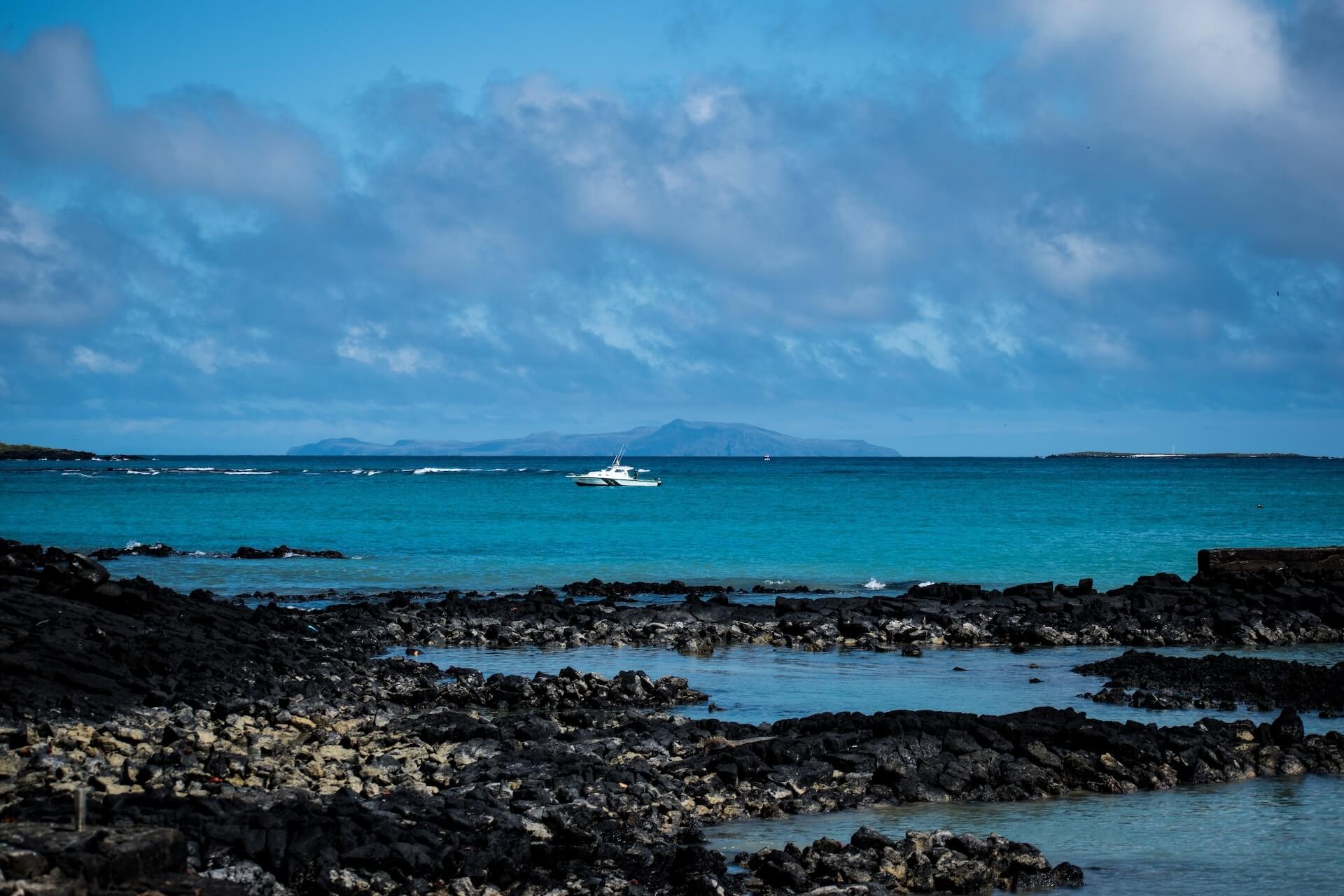The Galapagos Islands are undoubtedly some of the most beautiful islands in the world, as most travellers who have been lucky enough to visit this Ecuadorian archipelago will agree. They lie in the middle of the Pacific, right on the equator and far from the South American continent. The isolation of the archipelago has helped nature to create many species of plants and animals that are found nowhere else in the world. Two dozen volcanic islands form one large national park and a living laboratory where we can observe the evolution of unique species such as giant tortoises and iguanas. In my experience, the best way to explore the Galapagos is on a comfortable catamaran, a floating hotel with all the facilities. A stable boat will safely transport you between islands and to inaccessible places in the wilderness that you can't otherwise get to.
On a yacht between islands
Yachtsmen know the Galapagos Islands as one of the traditional stops on round-the-world cruises. For ocean sailors, it's the first piece of land they see after leaving the Panama Canal, and for those who continue on across the Pacific, it's the last place of civilisation for many weeks. For exploring the Galapagos you can use one of the commercial yachts that have the proper permits to sail and anchor in the reserve.
This was the second time I have travelled to the Galapagos Islands, this time opting for an eight-day cruise on a comfortable catamaran. The stable 16-passenger motor yacht transported me to pristine wilderness locations where we photographed and explored the local wildlife. Several times a day we went on island expeditions, explored the coastline from motorboats or kayaks, snorkelled among turtles, penguins and sea lions, and swam in the clear, warm sea.
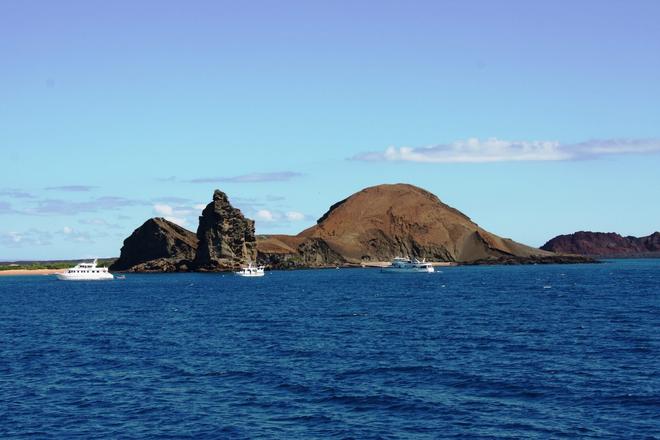
Great snorkelling and expeditions into the interior of volcanic islands
Upon arrival at Baltra Island, we board a comfortable catamaran with fifteen other travellers. The boat has air-conditioned cabins, a spacious dining room, bar and an elevated observation deck. In addition to the captain, eight other people will be looking after us for the following week, including a guide and a biologist. We set sail in the evening and watch the equatorial sun set behind the silhouette of one of the islands from the observation deck.
The programme during our cruise includes a variety of activities – excursions along the coast and inland islands, inflatable boat cruises, snorkeling, swimming, and paddling a kayak.
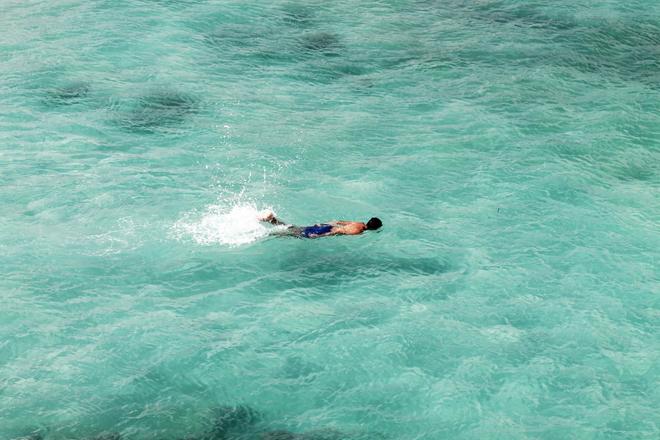
The following morning we disembark the inflatables off the lava coast of Santiago Island. We hike with our guide through the lava fields into the interior of the island. Angelica has lived here for thirty years and knows the Galapagos perfectly. Thanks to her, we learn a lot about the animals, geology and conservation.
Animals are not afraid in the Galapagos Islands, you can observe and photograph them from literally a few centimetres away. But one of the rules of the park is not to approach the animals within two meters, which I often have trouble with: the birds sit on branches right next to the path, you have to cross the sea lions to pass, and the giant tortoises are so slow that it would be a shame not to take a portrait or close-up. Before sunset, we head to the lookout point on Bartolomé Island, the top of which offers a spectacular view of the wild volcanic landscape and surrounding islands.
In a paradise of birds and sea lions
The cruise itinerary is busy and well thought out – we sail between islands mostly at night, saving time, and while we sleep, our catamaran makes its way to the next beautiful anchorage.
We can afford to visit the very isolated island of Genovesa, which is literally a paradise for all kinds of birds. In the morning we anchor in the beautiful enclosed Darwin Bay, once formed by the flooding of a volcanic crater. Terns watch us from the rocky cliffs and hundreds of other feathered creatures circle the sky above.
As we climb up the cliffs, I feel like I'm in a ZOO – wild birds are literally everywhere, nesting on the ground and on tree branches, and they're not afraid of us at all. Hairy baby frigatebirds and terriers helplessly spread their wings to train their flying muscles, while their parents watch calmly. The animals in the Galapagos Islands have never been hunted (except for turtles) and therefore have no fear of humans.
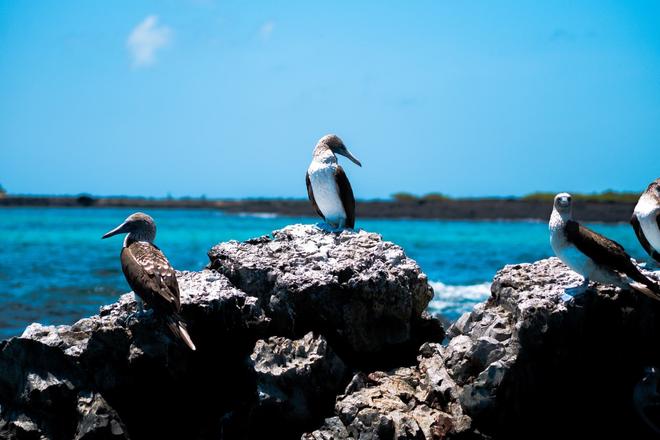
In the afternoon, I'm going for a ride around the bay in a sea kayak. I discover a small lagoon by the shore where several small sea lions are playing. It's a sort of seal nursery, where the pups practice swimming, chasing one another, occasionally biting each other lightly and clearly enjoying the aquatic environment. I paddle slowly among them in the shallow water and then return to the catamaran, because it's dinner time!
Swimming with sea lions and penguins
Although the Pacific water is cooler in October, we still spend a lot of time in and under the water. We can make use of the wetsuits and snorkelling equipment available to us. Life underwater in the Galapagos Islands is no less breathtaking than life on land – whether it's lava crevices with basking sharks or shorelines with hunting penguins. I watch iguanas "grazing", stingrays, schools of fish and colourful coral gardens.
But most of all, I enjoy swimming with the curious sea lions that swim past us in close proximity while snorkeling, tempting us to play underwater. When two young playful sea lions graced our group with their presence, the snorkeling stretched out to the point that we completely forgot about the time, leaving us without lunch!
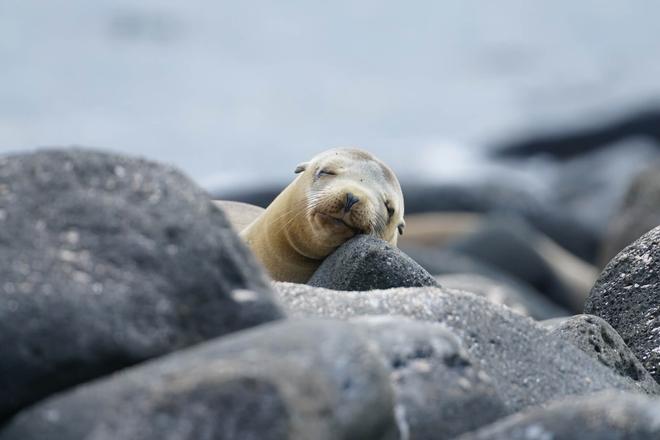
Around Isabela Island
Every Galapagos cruise is different, every ship has a different itinerary and a different plan of places to visit. I chose the route around the western islands, which attracted me because of their size and unique environment of active volcanic activity. Throughout the cruise I see few other boats and on land we are mostly alone in our small group. In the second half of the week we head to the furthest reaches of the Galapagos, which is the west coast of Isabela and Fernandina Island.
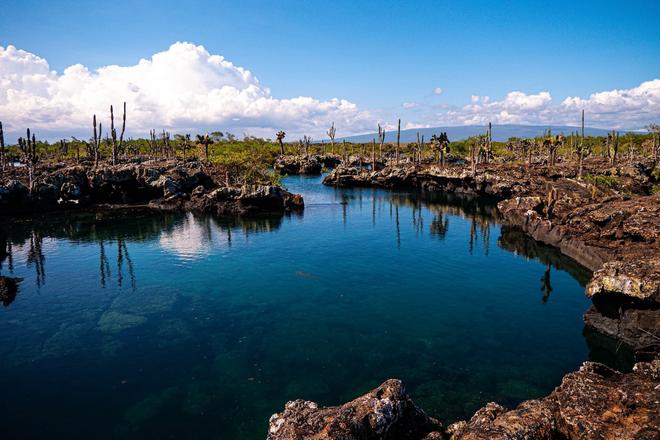
One of the highlights of this area is swimming in the "cleaning station of the turtles" that come to Isabela Island to have their shells cleaned of small fish and shrimp. Dozens of turtles hover in the shallow bay, paying no attention to me as I swim past them in close proximity.
On another island, I observe hundreds of marine iguanas basking in the sun, adjusting their black bodies to the sunlight, chilled after a long stay in the water. These Galapagos endemic species, up to a metre long, look truly prehistoric and imposing.
On the penultimate day we head to the crater of the Sierra Negra volcano, which is believed to be the second largest crater in the world. The 10km diameter crater is 1100m high and we drive a truck, called a "chiva", almost to its rim. From the car park, we climb for about an hour before we reach the crater's rim and can admire the breathtaking view of the lava fields far below.
Practical information
Weather and when to go
You can visit the Galapagos Islands all year round and you won't go wrong. There are two seasons: June – December (the so-called dry season), when the weather is sunny and the sea water is cooler (22-25 °C). During this time, the regular southeast trade winds blow. In contrast, the warm season (December – May) is characterised by occasional showers and warmer seas suitable for snorkelling (25-28 °C). Although animal activity varies from species to species throughout the year, according to experts there is no "deaf" or explicitly bad period. If you want to see the endemic Galapagos albatross (which breeds only on the island of Española), you must come here between April and December.
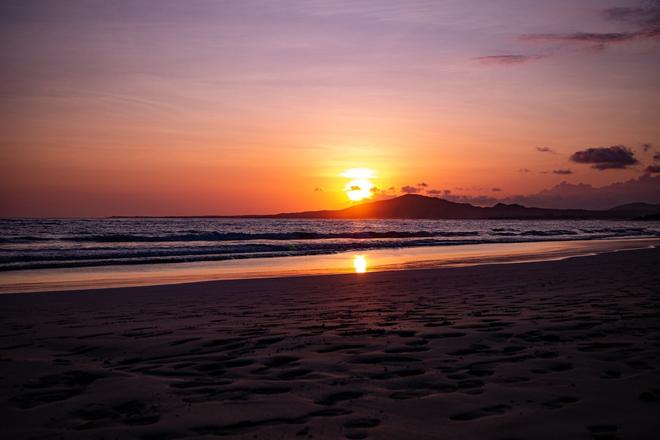
Conservation and tourism
The Galapagos Islands have been a national park and strict nature reserve since 1934 and a UNESCO World Heritage Site since 1978. Visitor movement around the islands is controlled; movement is only allowed in designated areas, groups are limited to 16 people and must be accompanied by a licensed guide. The number of visitors to the islands is regulated by the capacity of the boats and hotels; approximately 250,000 visitors visit the islands annually.
Prices
Staying in the Galapagos Islands is not cheap – in addition to airfare (just the flight from Quito costs about 12,000 USD), each visitor pays a fee of 100 USD for entering the national park and a processing fee of 20 USD. A stay on a yacht costs from about 170 USD a day and includes full board, a knowledgeable guide, all excursions, kayak and snorkelling equipment hire in addition to the cruise itself.
Organisation of the cruise
Comfortable boats with air-conditioned cabins usually have a capacity of 16 people and are led by an experienced crew including a cook, guide and biologist. Depending on your interest, you can choose different lengths of programme – most cruises are 4-14 days long, 8 days is optimal; several disembarkations are scheduled each day, and other activities: try snorkeling, diving and sea kayaking.
